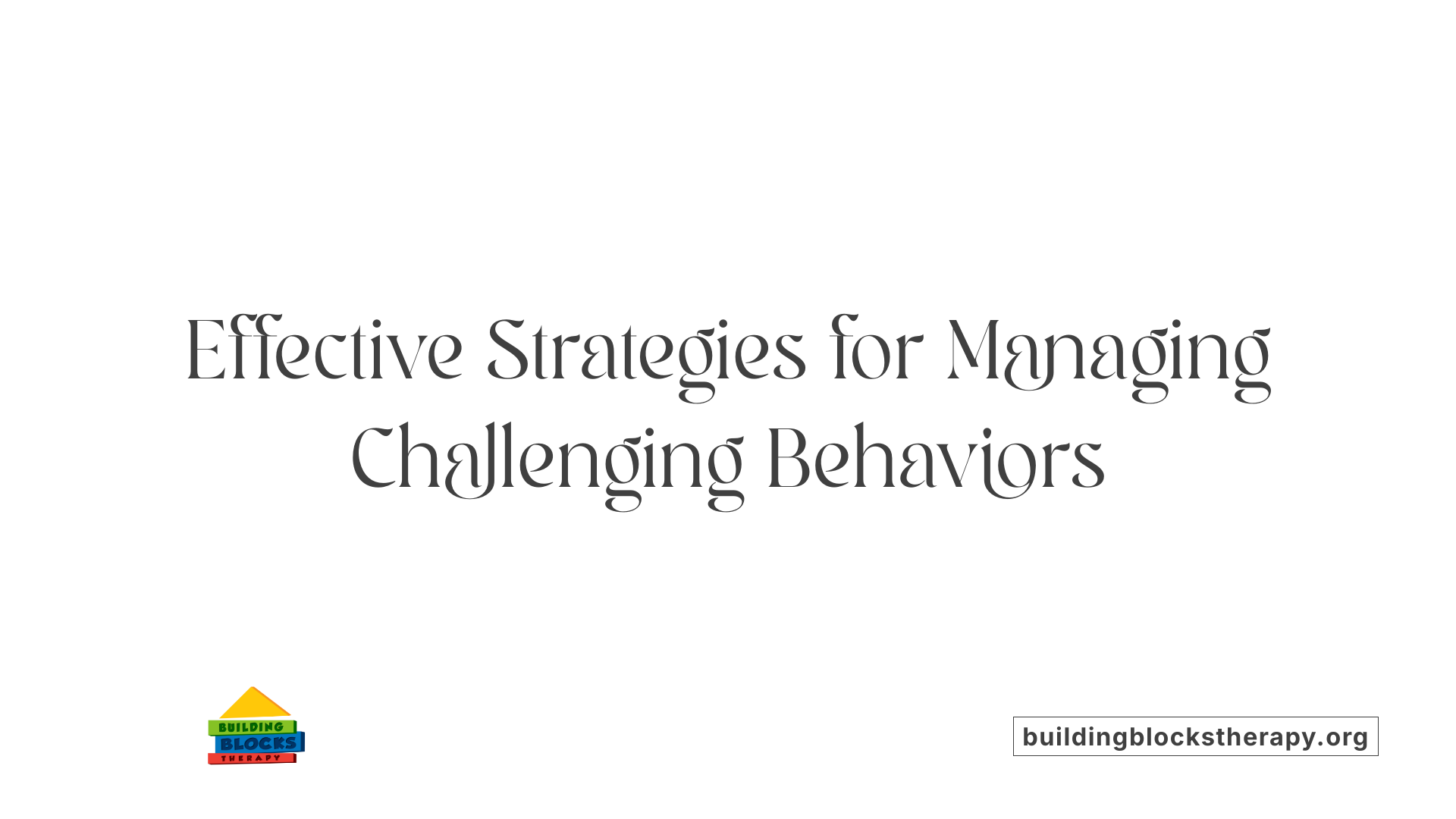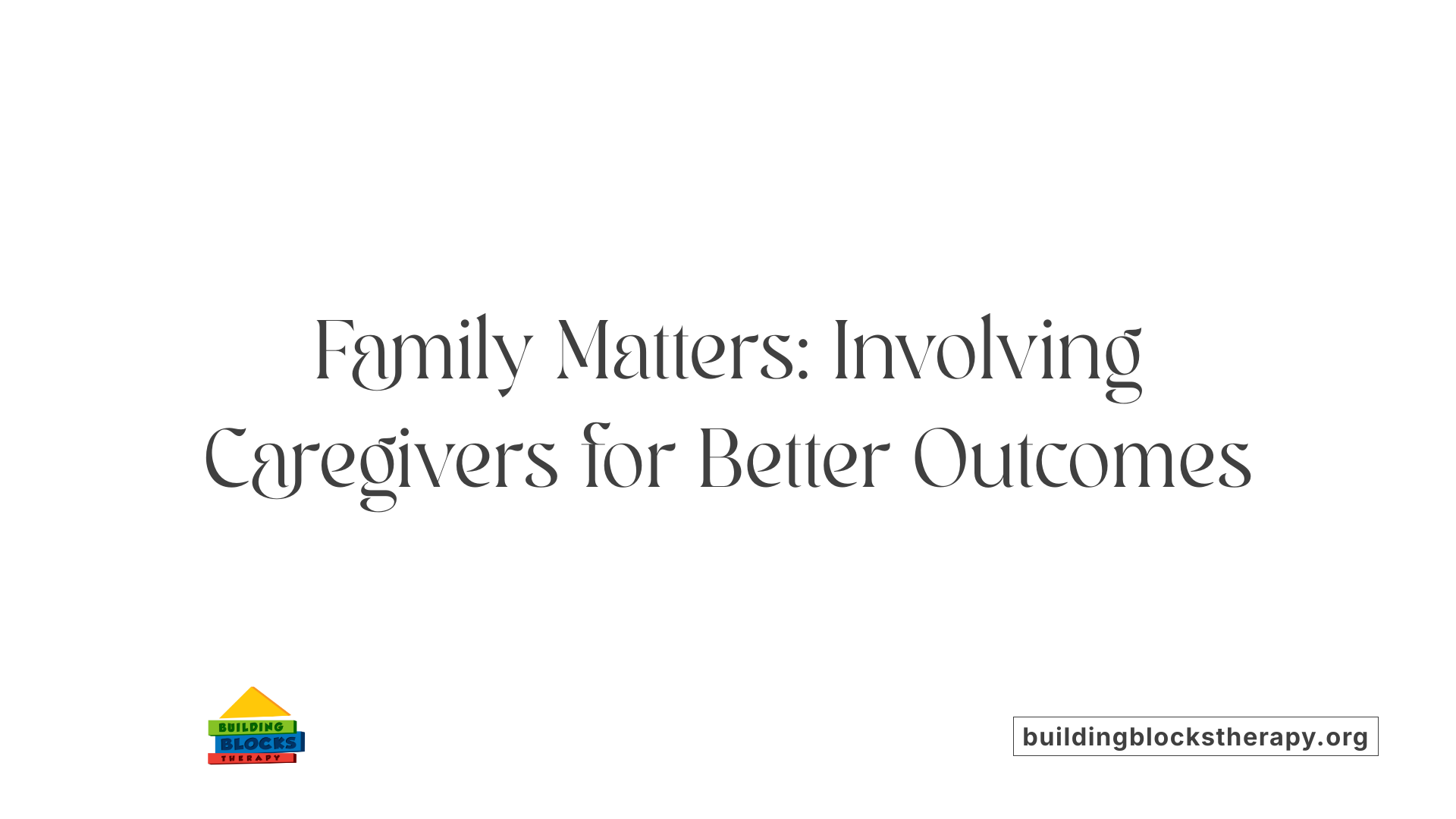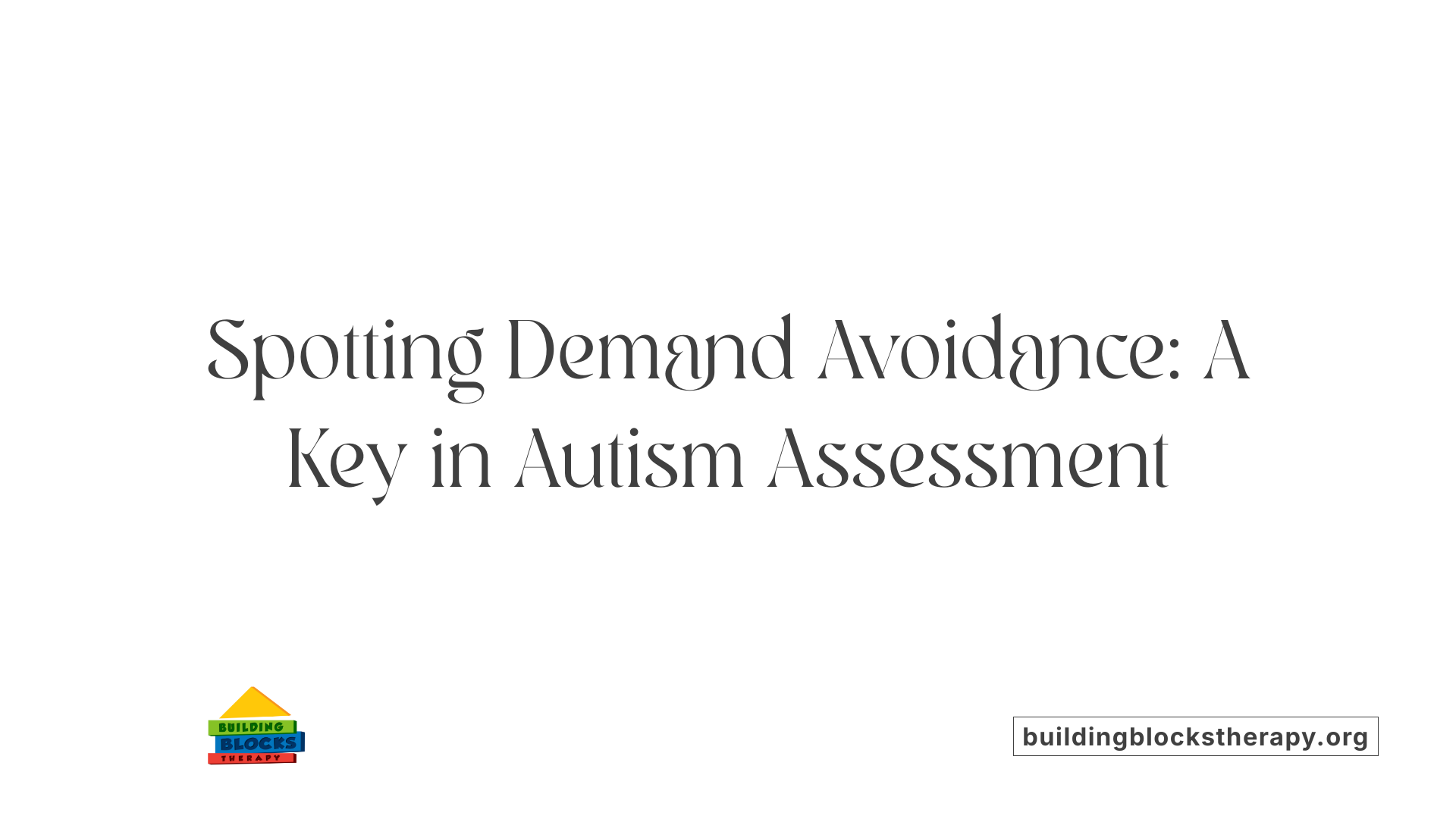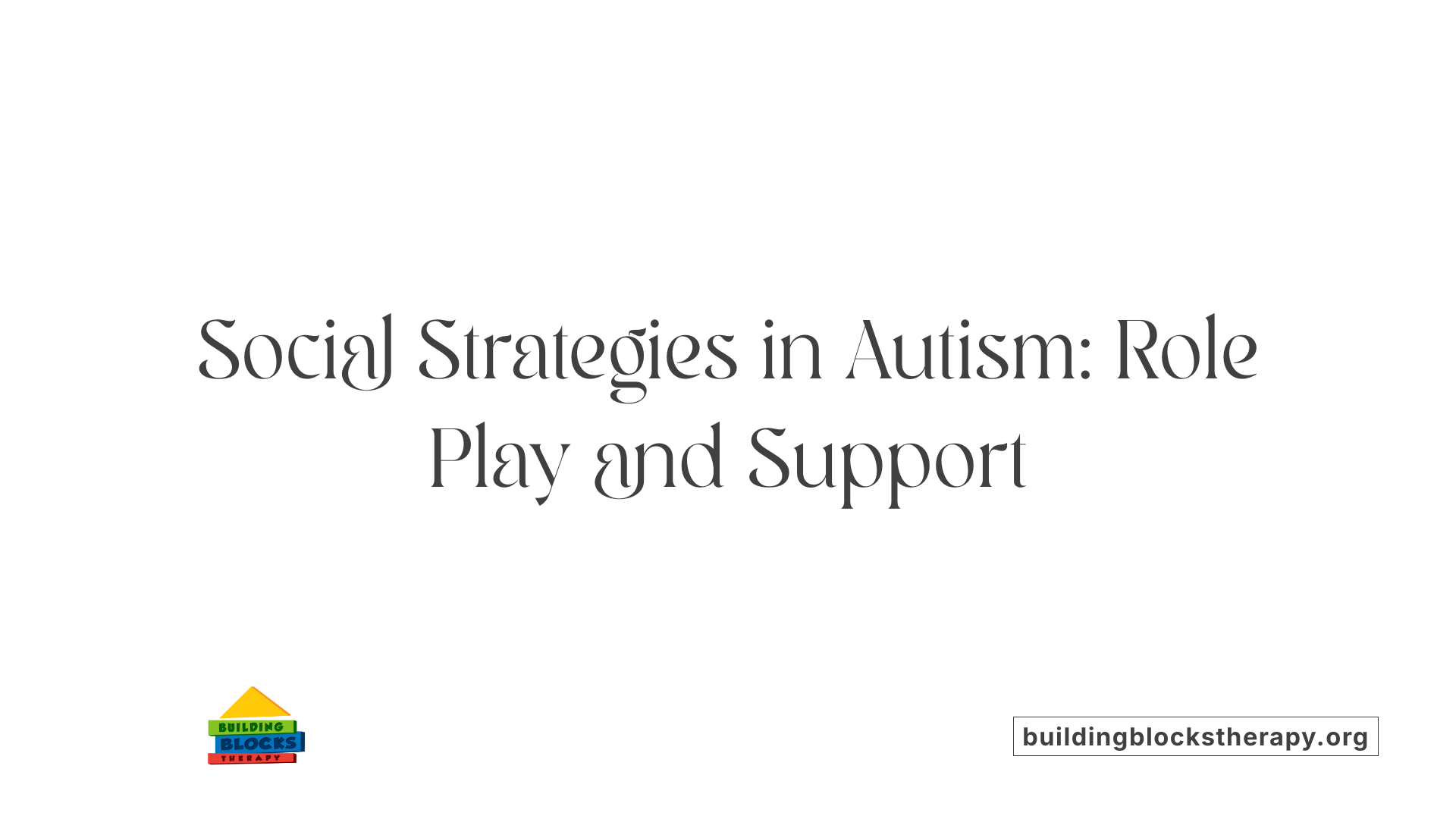A Scientific Approach to Unlocking Communication and Skills
Nonverbal autism presents unique challenges and opportunities for intervention. Applied Behavior Analysis (ABA) therapy offers a research-backed, evidence-based method to understand behavior and foster essential skills in those affected. This article explores how ABA helps individuals with nonverbal autism, detailing key components of therapy, the roles of qualified providers, and the importance of tailored strategies including considerations for profiles like Pathological Demand Avoidance (PDA). Our goal is to provide a comprehensive understanding of how ABA therapy supports development, communication, and independence for individuals on the autism spectrum who are nonverbal.
What Is Applied Behavior Analysis (ABA) Therapy?

What is Applied Behavior Analysis (ABA) therapy?
Applied Behavior Analysis (ABA) therapy is an applied science focused on understanding and modifying observable behaviors by examining their environmental causes. Primarily used with individuals on the autism spectrum, ABA employs individualized programs to promote desirable behaviors and reduce problematic ones. The approach leverages assessments like Functional Behavior Assessments (FBAs) to identify why a behavior occurs, such as for sensory input, gaining access to items, avoiding tasks, or seeking attention.
What are the core principles of ABA?
ABA is grounded in the principles of operant conditioning — including reinforcement, punishment, extinction, and motivating operations — to shape behavior. Behaviors that are reinforced tend to increase, making positive reinforcement a central strategy. Some well-established methods in ABA include discrete trial training (DTT) and pivotal response treatment (PRT), both scientifically supported techniques for teaching skills effectively.
What is the scientific basis behind ABA and operant conditioning?
ABA therapy relies on the science of operant conditioning, which was extensively studied by behaviorists such as B.F. Skinner. This science explains how behaviors change based on their consequences. Techniques like task analysis, chaining, prompting, and fading help break down complex skills into teachable parts, allowing gradual skill acquisition through consistent reinforcement schedules. Early research by Ivar Lovaas demonstrated significant improvements in children with autism using intensive ABA methods, highlighting the therapy’s effectiveness.
How is ABA therapy individualized?
ABA interventions start with careful assessment to understand each individual's unique behavioral needs and the environment's impact. Programs are tailored accordingly, focusing on areas such as communication, social skills, academic abilities, and self-care. Qualified behavior analysts (BCBAs) develop and monitor these programs, adjusting strategies as progress is tracked through data collection. This individualized approach ensures that therapy targets meaningful behaviors that improve everyday functioning and quality of life.
How ABA Therapy Helps Individuals with Nonverbal Autism

Teaching New Skills
ABA therapy uses structured methods like task analysis and chaining to break down complex skills into manageable steps. These techniques enable individuals with nonverbal autism to learn essential daily living skills and improve their ability to interact with their environment effectively. Therapists carefully design learning sessions that build on each success, fostering gradual skill acquisition.
Communication Development
Since communication can be challenging for nonverbal individuals, ABA employs prompting strategies coupled with reinforcement to encourage alternative communication methods. These might include picture exchange systems, gestures, or the use of assistive technology, enhancing the individual's ability to express needs and participate socially.
Reducing Challenging Behaviors
ABA focuses on identifying the environmental causes of challenging behaviors through functional behavior assessments (FBAs). By understanding why a behavior occurs—whether for attention, escape, sensory needs, or access to activities—interventions are tailored to reduce those behaviors and replace them with more appropriate alternatives.
Role of Reinforcement and Prompting
Positive reinforcement is central to ABA, rewarding desirable behaviors to increase their frequency. Prompting assists learners in performing targeted behaviors and is gradually faded to foster independence. This balance aligns with operant conditioning principles, ensuring behaviors are consistently encouraged and maintained.
Family Involvement
Families play a crucial role in ABA therapy success. Caregiver training ensures that strategies are consistently applied across environments, reinforcing learning and promoting generalization of skills. Resources like Jed Baker's No More Meltdowns emphasize managing challenging behaviors within family dynamics, highlighting the importance of collaboration.
ABA therapy systematically improves communication and life skills while minimizing behaviors that interfere with learning. With individualized approaches and strong family partnerships, it supports nonverbal individuals in achieving greater autonomy and engagement in daily life.
Assessment in ABA: Understanding Behavior Functions

What are Functional Behavior Assessments (FBAs)?
Functional Behavior Assessments are systematic evaluations used in Applied Behavior Analysis (ABA) to identify the reasons behind observable behaviors. FBAs examine the context and environmental factors influencing behaviors to determine their purpose or function.
What are the functions of behavior?
Behaviors typically serve one or more specific functions, helping individuals to meet their needs or respond to their environment. The primary functions identified in FBAs include:
- Sensory (Automatic) Function: Behavior that provides internal stimulation or relief without involving others.
- Escape/Avoidance: Behavior aimed at avoiding or escaping undesirable tasks, situations, or demands.
- Access to Items or Activities: Behavior that helps gain access to preferred objects or activities.
- Attention: Behavior that seeks social interaction or acknowledgement from others.
How does ABA understand behavioral motivation?
ABA focuses on how environmental factors motivate behaviors. Through FBAs, therapists discern what reinforces or maintains behaviors by observing antecedents and consequences. Identifying these motivating factors is crucial for developing effective interventions that encourage desirable behavior and reduce problematic ones.
Key Components of an ABA Therapy Program

Assessment and Individualized Goals
A successful ABA therapy program starts with a comprehensive assessment, such as a Functional Behavior Assessment (FBA), to understand why certain behaviors occur. This assessment helps identify if behaviors serve functions like sensory needs, escaping demands, gaining attention, or accessing desired items. Based on these insights, personalized goals are created to target each individual’s unique strengths and challenges.
Behavioral Techniques and Principles
The program incorporates foundational behavioral principles, including reinforcement, punishment, extinction, and motivating operations. Techniques such as discrete trial training (DTT), pivotal response treatment (PRT), task analysis, chaining, prompting, and fading are systematically used to teach new skills and modify behaviors. Positive reinforcement is a core strategy, rewarding desired behaviors to promote their recurrence.
Data Collection and Monitoring
ABA therapy emphasizes continuous data collection to track progress and measure the effectiveness of interventions. This systematic monitoring allows behavior analysts to adjust strategies as needed, ensuring optimal outcomes and maintaining scientific rigor throughout the treatment process.
Target Skills and Behavior Modification
ABA programs cover a broad spectrum of skills, including social communication, personal hygiene, fine motor abilities, academic tasks, and daily living skills. Reducing problematic behaviors is approached by understanding the environmental triggers behind them and reinforcing alternative, more appropriate behaviors. The goal is not only to change behaviors but to foster meaningful improvements that generalize across settings.
Overall, ABA therapy programs are characterized by their individualized, evidence-based approach grounded in thorough assessment, rigorous data collection, and the application of well-established behavioral principles to support lasting positive change.
Behavioral Techniques Used in ABA Therapy

What are Task Analysis and Chaining?
Task analysis breaks complex skills into smaller, manageable steps, making learning more accessible. Chaining involves teaching these steps in sequence so the individual can perform the entire task independently. This method is particularly effective when teaching daily living skills.
How Do Prompting and Fading Work?
Prompting provides guidance or cues to encourage desired behavior, while fading gradually reduces these prompts as the learner gains independence. This ensures the individual doesn't become reliant on prompts and can perform behaviors autonomously.
What Is Discrete Trial Training (DTT)?
DTT is a structured teaching method that breaks skills into small, discrete units. Each trial involves a clear instruction, a prompt if needed, a response from the learner, and immediate feedback or reinforcement. DTT is widely used for teaching specific skills in children with autism.
What Is Pivotal Response Treatment (PRT)?
PRT focuses on enhancing pivotal areas of a child's development, such as motivation and response to multiple cues. Rather than targeting individual behaviors, this approach promotes broad improvements across various skills by emphasizing naturalistic and play-based learning.
How Are Reinforcement Schedules Used?
ABA employs different reinforcement schedules to encourage behavior change. These schedules determine when and how often rewards are given, helping maintain or increase desired behaviors. Adjusting reinforcement schedules is essential for sustaining long-term behavior improvements.
These behavioral techniques form the core of ABA therapy, enabling therapists to tailor interventions that promote skill acquisition and behavior modification in individuals with autism.
The Role of Operant Conditioning Principles in ABA

What Are Reinforcement and Punishment in ABA?
Applied Behavior Analysis (ABA) therapy utilizes the principles of operant conditioning to influence behavior effectively. Reinforcement involves increasing the likelihood of a behavior by presenting a rewarding stimulus after the behavior occurs. Conversely, punishment seeks to decrease behaviors by introducing an adverse consequence or removing a positive one.
How Do Extinction and Motivating Operations Affect Behavior?
Extinction in ABA refers to the process of reducing a behavior by withholding the reinforcement that previously maintained it. Motivating operations are environmental factors that temporarily alter the value of a reinforcer, thus influencing the frequency of a behavior. Together, these elements allow therapists to modify behavior by controlling antecedent and consequential conditions.
What Mechanisms Drive Behavior Change in ABA?
ABA therapy focuses on observable behaviors and their environmental causes. By systematically applying reinforcement, punishment, extinction, and adjusting motivating operations, behavior change is encouraged. This approach ensures behavior is shaped in a desired direction, increasing helpful skills while decreasing problematic ones.
How Does Applied Psychology Form the Basis of ABA?
Grounded in applied psychology, ABA applies operant conditioning principles to real-world settings. This applied science continuously evolves through research and clinical practice, particularly in autism intervention, to improve social skills, communication, and adaptive behaviors. Reinforcement schedules and precise behavioral assessments ensure interventions are tailored and effective.
The Emergence and Evolution of ABA Therapy

Historical development
Applied Behavior Analysis (ABA) therapy has its roots in behaviorist psychology, particularly grounded in the principles of operant conditioning. This scientific approach emphasizes observable behaviors and the environmental factors influencing them. Over the past 40 years, ABA has evolved from basic behavioral principles into a comprehensive therapy predominantly used with children on the autism spectrum and other developmental disorders.
Ivar Lovaas’ pioneering work
A seminal figure in the history of ABA is Ivar Lovaas, whose early research demonstrated the transformative potential of intensive ABA interventions. Lovaas showed that through structured and repetitive behavioral techniques, significant improvements could be achieved in children with autism. Notably, some children receiving intensive ABA therapy lost their autism diagnosis in subsequent evaluations, marking a remarkable milestone that inspired widespread adoption of these practices.
Evolution of therapy methods
Initially focused on discrete trial training (DTT), ABA has expanded to incorporate a variety of methods such as task analysis, chaining, prompting, fading, and sophisticated reinforcement schedules. These developments reflect increasing recognition of the diverse learning needs of individuals. Functional behavior assessments (FBAs) became integral to understanding the reasons behind behaviors, categorizing them as sensory, access-driven, escape-related, or attention-seeking. This nuanced understanding shaped more personalized interventions.
Contemporary ABA practices
Today, ABA continues to adapt and refine itself, embracing dynamic and complex strategies. Prominent behavioral techniques like pivotal response treatment (PRT) complement earlier methods, supported by empirical research validating their effectiveness. Contemporary ABA also emphasizes parent involvement and addresses challenges such as demand avoidance profiles within autism. Advances encompass a wider range of skills development—including social communication and academic abilities—underscoring ABA’s role in promoting meaningful functional outcomes.
Providers of ABA Therapy Services

Who provides ABA therapy services?
ABA therapy services are typically delivered by trained professionals who specialize in behavior analysis. The cornerstone of this provider group is the Board Certified Behavior Analyst (BCBA), who designs, oversees, and adjusts treatment plans based on individual assessments. These professionals lead behavior therapists and technicians in implementing evidence-based strategies to improve desired behaviors and reduce challenging ones.
Role of Board Certified Behavior Analysts (BCBAs)
BCBAs are highly trained and credentialed experts who conduct comprehensive behavioral assessments such as Functional Behavioral Assessments (FBAs). Using these assessments, they tailor interventions like discrete trial training or pivotal response treatment to meet the unique needs of each individual. BCBAs also supervise therapy sessions to ensure fidelity to applied behavior analysis principles and ethical practice.
Specialized clinics and companies
Many organizations, including specialized clinics and companies like Cortica, offer integrated ABA therapy services. These centers often provide a combination of ABA along with speech therapy, occupational therapy, and other developmental supports, creating a cohesive approach to individualized care. Their interdisciplinary teams work collaboratively to maximize outcomes across various developmental domains.
Settings and family involvement
ABA therapy can be provided in diverse environments such as homes, schools, clinics, and community centers. Family involvement is integral to the success of interventions, with therapists training caregivers to implement strategies consistently throughout daily routines. This partnership enriches learning opportunities, helps generalize skills, and supports lasting behavioral improvements.
Together, qualified providers ensure ABA therapy is personalized, scientifically grounded, and delivered within a supportive network of professionals and family, tailored to the individual’s strengths and challenges.
Improving Communication Skills in Nonverbal Autism Through ABA
Communication-focused interventions
Applied Behavior Analysis (ABA) employs specific communication-focused interventions tailored to individuals with nonverbal autism. These interventions are designed to develop and enhance meaningful communication by targeting the core deficits in social interaction and expression. Techniques such as discrete trial training (DTT) provide structured teaching opportunities, while pivotal response treatment (PRT) emphasizes motivation and naturalistic learning to increase communicative attempts.
Use of alternative and augmentative communication (AAC)
For many nonverbal individuals with autism, ABA integrates Alternative and Augmentative Communication (AAC) methods to facilitate expression. AAC includes tools like picture exchange systems, speech-generating devices, and sign language. Incorporating AAC within ABA therapy helps establish functional communication, reducing frustration and behavioral challenges. The gradual fading of prompts and consistent reinforcement encourages independent use of these communication systems.
Enhancing social communication
ABA interventions also focus on enhancing social communication by teaching skills such as eye contact, turn-taking, joint attention, and appropriate use of language or AAC in social contexts. Task analysis and chaining are used to break down complex social interactions into manageable steps. Through reinforcement schedules tailored to individual needs, learners improve their ability to initiate and respond during social engagements.
Generalization of communication skills
A critical component of ABA for nonverbal autism is the generalization of communication skills across different environments, people, and situations. Functional behavior assessments (FBAs) help identify relevant contexts and triggers. Therapists design programs that encourage transferring learned communication behaviors from therapy settings to home, school, and community life. Parent involvement and coaching are essential to maintain and expand communication use beyond structured sessions.
Addressing Challenging Behaviors in Nonverbal Autism

Identifying Triggers and Functions
Understanding why challenging behaviors occur is essential in nonverbal autism interventions. Functional behavior assessments (FBAs) are used to identify the functions behind behaviors. These functions include sensory needs (automatic reinforcement), gaining access to preferred items or activities, escaping or avoiding demands, and obtaining attention. Recognizing these triggers allows therapists to tailor strategies that address the root causes rather than just the behaviors.
Behavior Reduction Strategies
Applied Behavior Analysis (ABA) utilizes several behavior reduction methods such as extinction and prompting. Extinction involves withholding reinforcement for maladaptive behaviors, leading to their decrease over time. Prompting helps guide the individual towards appropriate behaviors and is gradually faded to promote independence. A thoughtful combination of these strategies supports the reduction of problematic actions without causing distress.
Positive Reinforcement Alternatives
Increasing desirable behaviors is a central goal in ABA, achieved by rewarding behaviors that are appropriate and functional. Reinforcement schedules are carefully designed to encourage repetition of positive behaviors. For nonverbal individuals, this might include visual or tangible rewards, social praise, or access to preferred activities. These positive reinforcement approaches not only reduce challenging behaviors but also build new skills.
Role of Extinction and Prompting
Extinction and prompting work in tandem to shape behaviors effectively. While extinction reduces the undesired behavior by removing its payoff, prompting provides the necessary support for the individual to replace it with more acceptable actions. The fading of prompts over time helps maintain long-term gains, especially in teaching communication and coping skills vital for nonverbal children with autism.
By focusing on the underlying environmental causes and applying these ABA strategies, challenging behaviors in nonverbal autism can be managed constructively and empathetically.
Parent and Family Involvement in ABA Therapy

Why is Family Participation Important in ABA Therapy?
Family involvement is crucial in maximizing the success of ABA therapy, especially for children with autism spectrum disorder (ASD). Parents and caregivers bring valuable insights about daily behavior patterns and environmental factors influencing their child. Incorporating families ensures consistency in applying interventions and generalizing skills beyond clinical settings. The active participation of caregivers is strongly linked to improved learning outcomes and more sustainable behavioral changes.
What Strategies Support Learning at Home?
Several approaches help families support their children effectively:
- Consistent Reinforcement: Parents can apply reinforcement techniques taught by therapists to encourage desirable behaviors.
- Clear Communication: Using simple, calm language and visual supports to clarify expectations and reduce anxiety.
- Creating Structured Routines: Establishing predictable daily schedules to promote skill acquisition and reduce challenging behaviors.
- Collaborative Planning: Working closely with ABA professionals to tailor strategies that fit the child's and family’s unique needs.
What Resources and Education Are Available for Caregivers?
Caregivers can access a variety of resources to enhance their engagement:
- Educational Books: Titles such as No More Meltdowns by Jed Baker offer practical advice on managing challenging behaviors and family dynamics.
- Training Workshops: Sessions led by certified behavior analysts provide hands-on experience with behavior management techniques.
- Support Groups: Peer networks facilitate sharing experiences and strategies, reducing caregiver isolation.
- Online Platforms: Telehealth options and online forums deliver continuous learning opportunities and guidance.
How Does Family Involvement Impact Therapy Outcomes?
Studies show that when parents are actively involved, children demonstrate faster gains in social communication, adaptive skills, and reduced behavioral problems. The consistent application of ABA methods across environments leads to better generalization of skills and more meaningful improvements in daily functioning. Moreover, family engagement promotes a positive therapeutic atmosphere, enhancing motivation and emotional support for the child.
In summary, integrating parent and family participation into ABA therapy is essential. Through education, collaboration, and ongoing support, caregivers become empowered advocates, directly contributing to the effectiveness and durability of behavior change.
Ethical Considerations and Professional Resources in ABA

What Ethical Principles Guide Behavior Analysts?
Ethics play a crucial role in Applied Behavior Analysis (ABA), ensuring interventions respect client dignity and promote positive outcomes. The book Ethics for Behavior Analysts by Jon Bailey and Mary Burch is a seminal resource that outlines professional standards regarding confidentiality, informed consent, and ensuring interventions are socially significant and least restrictive.
Which Foundational Texts Should ABA Professionals Consult?
ABA practitioners benefit from foundational literature like Science and Human Behavior by B.F. Skinner, which grounds ABA in operant conditioning principles. Additionally, the Handbook of Applied Behavior Analysis provides comprehensive coverage—from the history and theory to practical interventions and emerging trends such as telehealth and behavioral economics.
How Do Professional Guidelines Shape ABA Practice?
Professional guidelines emphasize ongoing assessment, data-driven decision-making, and transparency. They call for parent and caregiver involvement to optimize therapy outcomes, as emphasized in resources like Jed Baker’s No More Meltdowns, which offers strategies for managing complex behaviors and family dynamics.
What Are Some Contemporary Issues in ABA?
Contemporary ABA embraces evolving methods to address diverse needs, including pediatric feeding disorders and telehealth services. Ethical practice demands staying informed about these advances while advocating for individualized support tailored to profiles such as PDA (Pathological Demand Avoidance).
This blend of rigorous ethical standards, well-regarded literature, and professional guidance ensures ABA continuously improves its effectiveness and social responsibility.
The Diversity of Autism Profiles: Understanding PDA

What are the characteristics of Pathological Demand Avoidance (PDA)?
Pathological Demand Avoidance is a profile within the autism spectrum marked by notable resistance and avoidance of everyday demands. Individuals with PDA often exhibit a strong need for control, which can manifest through social strategies like making excuses and diverting attention to escape demands. Mood swings, surface-level social communication skills, and obsessive behaviors further characterize this profile. Role playing is also a common trait, providing a means for these individuals to navigate social interactions and reduce anxiety.
How is demand avoidance linked to anxiety in PDA?
Demand avoidance in PDA typically stems from underlying anxiety and a desire to protect personal autonomy. The overwhelming need for control is a coping mechanism to manage this anxiety. Rather than simply resisting demands, individuals with PDA often feel compelled to avoid situations that provoke stress, leading to behaviors that may seem oppositional but are actually attempts at self-preservation.
What social communication traits are common in individuals with PDA?
Social communication in PDA is often described as surface-level, meaning that while individuals might display social skills outwardly, these interactions may lack depth or be used primarily as a tactic to avoid demands. This can sometimes be misunderstood as manipulative behavior, but it often reflects a coping strategy rather than intentional deceit.
How do role playing and obsessive behavior manifest in PDA?
Role playing serves as a significant social strategy for individuals with PDA, helping them manage challenging social situations and reduce demands in a non-threatening way. Obsessive behaviors also present frequently, aligning with the repetitive patterns seen across the autism spectrum but often focused on controlling the environment or interaction dynamics.
Together, these characteristics emphasize the need for tailored approaches that prioritize reducing demands and empowering individuals through choices, patience, and empathetic support to improve their quality of life and engagement.
Managing PDA Within the ABA Framework

Strategies to reduce demands
In managing Pathological Demand Avoidance (PDA) within the ABA framework, reducing demands is crucial. Individuals with PDA often experience anxiety around demands, which fuel their avoidance behaviors. Therapies aim to decrease direct demands on the person, thereby lessening resistance and fostering cooperation. This approach helps create a calmer environment conducive to learning and development.
Building trust and autonomy
Establishing trust is a foundational step in supporting individuals with PDA. Trust-building involves consistent, respectful interactions that empower the individual rather than compel compliance. By fostering autonomy and providing a sense of control, individuals with PDA can engage more willingly in therapeutic activities, supporting progress in skill acquisition and behavior management.
Empathy and patience in interventions
Empathy is a cornerstone in effective ABA interventions for PDA. Understanding that avoidance behaviors often stem from anxiety or a need to protect one's autonomy allows therapists and caregivers to respond compassionately. Patience enables the gradual introduction of tasks and supports the individual’s pacing, which is vital for sustained engagement and reduced behavioral escalations.
Depersonalizing requests and offering choices
To minimize resistance, requests given to individuals with PDA are best depersonalized—making demands feel less like obligations placed upon them. Additionally, offering choices rather than ultimatums helps satisfy the individual’s need to feel in control. This strategy aligns with behavioral principles used in ABA, promoting reinforced participation through positive experiences rather than confrontation.
Recognizing Demand Avoidance in Autism Assessments

Importance of Accurate Assessment
Recognizing demand avoidance during autism assessments is crucial for developing effective, personalized interventions. Demand Avoidance, particularly seen in profiles like Pathological Demand Avoidance (PDA), involves behaviors such as resistance to demands, mood variability, and a strong need to control the environment. Accurate identification ensures that support strategies consider these unique behavioral patterns rather than mislabeling them as defiance or manipulation.
Tailoring Interventions
Once demand avoidance is identified, interventions can be adapted to reduce direct demands and promote autonomy. Techniques involve depersonalizing requests and offering choices to empower the individual, which align with ABA principles that reinforce desirable behaviors through supportive environmental adjustments. These tailored approaches help reduce anxiety and improve engagement.
Avoiding Misinterpretation of Behavior
Demand avoidance behaviors—like making excuses or diverting attention—can be mistaken for deliberate manipulation. However, understanding them as coping strategies rather than willful misbehavior is essential for compassionate and effective support. This reframing promotes empathy and reduces conflict during interventions.
Coping Mechanisms vs Manipulation
Individuals with PDA and other demand avoidance profiles often employ social tactics to manage anxiety associated with demands. These strategies, though appearing manipulative, are adaptive responses to protect autonomy. Recognizing the difference between coping mechanisms and manipulation shapes intervention methods that are patient-centered and respectful of the individual's needs.
Emerging Trends and Innovations in ABA Therapy

Replacement of Older ABA Methods
The field of Applied Behavior Analysis (ABA) is not static; it evolves as new research and technologies emerge. Older methods are gradually being replaced with more dynamic and effective approaches tailored to individual needs. This evolution reflects a deeper understanding of the complexities of behavior and learning, leading to more refined, ethical, and patient-centered interventions.
Telehealth and Technology Integration
One notable advancement is the integration of telehealth in ABA therapy. Telehealth platforms facilitate remote delivery of ABA services, making therapy more accessible, especially for families in remote or underserved areas. This innovation allows therapists to monitor progress, provide coaching, and adjust interventions in real time through digital means, thus enhancing flexibility and continuity of care.
Behavioral Economics in ABA
Behavioral economics has recently been applied within ABA frameworks to better understand and influence decision-making and motivation. By incorporating concepts such as reinforcement timing and magnitude, practitioners can design interventions that effectively shape behaviors. This approach helps in tailoring reinforcement schedules that align with the individual's preferences and environmental context, improving therapeutic outcomes.
Treating Pediatric Feeding Disorders
Another emerging area is the application of ABA techniques to pediatric feeding disorders. The comprehensive Handbook of Applied Behavior Analysis highlights innovative interventions targeting these challenges. ABA-based strategies are being used to address feeding difficulties by systematically modifying maladaptive behaviors and reinforcing appropriate eating habits, thereby expanding the scope and impact of ABA therapy beyond traditional domains.
These innovations emphasize ABA’s dynamic nature, enhancing its efficacy and accessibility while addressing complex behavioral issues with nuanced and technologically supported approaches.
Skill Development Beyond Communication: Life and Academic Skills

How does ABA support personal hygiene?
ABA therapy systematically teaches personal hygiene skills through methods like task analysis, which breaks down complex routines into manageable steps. Reinforcement schedules help motivate learners to practice and maintain hygiene behaviors, such as handwashing or toothbrushing, promoting independence and reducing caregiver assistance.
What role does ABA play in enhancing fine motor skills?
Fine motor skills, such as buttoning clothes or using utensils, are developed using ABA techniques including prompting and fading. By reinforcing successive approximations, ABA encourages gradual mastery of these skills, crucial for daily living and self-care.
How does ABA facilitate academic readiness?
By employing discrete trial training (DTT) and chaining processes, ABA prepares children for academic learning. These methods teach foundational skills such as matching, sorting, and following instructions, laying the groundwork for more complex school-based learning.
In what ways does ABA improve social participation?
ABA targets social skills through reinforcement of positive social behaviors like sharing, turn-taking, and communication. Functional behavior assessments help identify behaviors to increase or decrease, enabling customized interventions that enhance social integration and peer engagement.
The comprehensive approach of ABA goes beyond communication, addressing multiple life domains to foster autonomy and academic success for individuals with autism spectrum disorder. Parent involvement and continuous assessment ensure that skill-building remains adaptive and effective.
The Impact of Early and Intensive ABA Intervention

Critical periods for intervention
Early intervention with Applied Behavior Analysis (ABA) is crucial because there are developmental windows where children, especially those with autism spectrum disorder (ASD), are most receptive to learning new behaviors and skills. Intensive ABA therapy during these periods helps harness brain plasticity to maximize gains.
Long-term outcomes
Long-term studies show that children who receive early and intensive ABA treatment often experience significant improvements in communication, social skills, and adaptive behaviors. These outcomes can lead to better quality of life, increased independence, and higher academic achievement over time.
Studies on diagnosis loss
Pioneering research by Ivar Lovaas demonstrated that some children with autism who underwent intensive ABA therapy showed such progress that they no longer met diagnostic criteria for autism according to specific standardized evaluations. This groundbreaking finding underscored the potential of early, dedicated intervention.
Maximizing developmental gains
To maximize developmental gains, ABA therapy employs rigorous assessment methods to target specific behaviors and teach essential skills. Techniques like discrete trial training (DTT) and task analysis ensure systematic learning. Additionally, family involvement and consistent reinforcement help maintain and generalize these skills beyond therapy sessions.
The combined evidence supports the importance of starting ABA early and intensively to optimize behavioral and developmental outcomes for children with autism.
Understanding the Motivation Behind Behavior in Nonverbal Autism

How Do Environmental Influences Affect Behavior in Nonverbal Autism?
Behavior in individuals with nonverbal autism is deeply influenced by their environment. Applied Behavior Analysis (ABA) emphasizes that behaviors are not random but are responses shaped by surroundings and experiences. By observing and modifying environmental factors, therapists can better support positive behavior changes.
What Are the Sensory Functions of Behavior?
One important function of behavior is sensory or automatic reinforcement. This means some behaviors are performed to satisfy internal sensory needs, like soothing or stimulating sensations. For individuals with nonverbal autism, these sensory-driven behaviors are often self-reinforcing and may serve as coping mechanisms.
Why Do Escape and Attention Seeking Occur?
Behaviors may also function to gain access to desired items or activities or to escape or avoid unpleasant situations or demands. Attention-seeking behaviors often arise because receiving attention themselves can be rewarding. Understanding these motivations helps create strategies that meet needs more adaptively.
What Is Behavioral Function Analysis?
Functional Behavior Assessments (FBAs) are vital tools in ABA used to identify the reasons behind specific behaviors. FBAs analyze behavior patterns to classify their function into categories such as sensory stimulation, escape, access, or attention. This analysis guides tailored interventions that focus on the real causes rather than just the symptoms of behavior.
By recognizing the underlying functions driving behavior in nonverbal autistic individuals, especially through environmental context and sensory needs, ABA practitioners develop more effective strategies to support communication, learning, and wellbeing.
Overcoming Barriers in ABA Therapy for Nonverbal Individuals

Communication Limitations
Nonverbal individuals face unique challenges in ABA therapy due to limited expressive language skills. Without traditional verbal communication, therapists must rely heavily on alternative methods such as picture exchange communication systems (PECS), sign language, or augmentative and alternative communication (AAC) devices. These tools help bridge the communication gap, allowing the individual to express needs and preferences effectively.
Engagement Challenges
Engaging nonverbal clients requires tailored strategies to capture and maintain their attention. Techniques like task analysis and chaining break down complex tasks into manageable steps, fostering participation and skill acquisition. Prompting and fading are carefully adjusted to support learning while encouraging independence, making therapy sessions more productive.
Therapist Adaptability
Therapists must remain flexible and responsive to each individual's unique behavioral cues and sensory preferences. Conducting thorough functional behavior assessments (FBAs) enables identification of the purpose behind behaviors, such as escape or sensory input. Understanding these functions allows therapists to create interventions that minimize challenging behaviors and reinforce positive ones.
Family and Community Support
Family involvement is critical in maximizing therapy outcomes. Training family members in consistent implementation of ABA strategies ensures skill generalization beyond sessions. Additionally, community support promotes social engagement opportunities, contributing to the individual's overall development and wellbeing.
Addressing these barriers with informed, compassionate approaches leads to more effective ABA therapy for nonverbal individuals, improving their quality of life and fostering greater independence.
The Role of Role Play and Social Strategies in Autism

Use and Interpretation of Social Tactics
Individuals on the autism spectrum, including those with Pathological Demand Avoidance (PDA), often utilize social strategies such as role play or diverting attention. These tactics are frequently seen as attempts to manage or avoid demands placed upon them. For example, a child may use making excuses or changing the topic as a way to reduce pressure.
Coping Strategies Versus Manipulation
While these behaviors can sometimes be mistaken for manipulative actions, they are better understood as coping mechanisms that help the individual handle anxiety or overwhelm. Recognizing this distinction is essential in approaching behavior with empathy rather than judgment, fostering trust and better support.
Supporting Social Engagement
Role play and surface-level social communication skills serve as important tools for individuals with autism to engage socially in ways that feel comfortable and less demanding. Empowering these behaviors by providing choices and patience helps build positive social interactions. Additionally, person-centered strategies promote understanding of these social tactics not as defiance but as adaptive.
Role in Behavior Management
In ABA therapy and other behavioral approaches, acknowledging the function of social strategies like role play is crucial in creating effective interventions. Therapies that reduce rigid demands and offer flexibility allow individuals with PDA and autism to participate actively and learn skills at their own pace, reducing anxiety and fostering cooperation.
| Aspect | Description | Implication for Support |
|---|---|---|
| Social Tactics in Autism | Use of role play, excuses, and distraction | Viewed as coping, not manipulation |
| Coping Mechanisms | Strategies to manage anxiety and demand stress | Require empathetic response |
| Role Play | Facilitates comfortable social engagement | Encouraged as a positive interaction method |
| Behavior Management | Flexible, demand-reduced approaches | Enhances participation and decreases resistance |
Empowering Nonverbal Individuals Through Science and Compassion
Nonverbal autism requires a nuanced, individualized approach informed by sound scientific principles and compassionate care. Applied Behavior Analysis therapy stands as a cornerstone intervention, incorporating decades of research and evolving techniques to unlock communication, improve social participation, and foster independence. By understanding the diverse profiles within the autism spectrum, such as PDA, practitioners can tailor strategies that respect individuality and promote empowerment. Collaboration among professionals, families, and communities ensures that therapy outcomes extend beyond clinical settings into meaningful daily life improvements. Ultimately, ABA's dynamic, evidence-driven framework offers hope and tangible progress for nonverbal individuals and those who support them.






